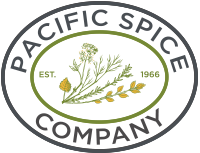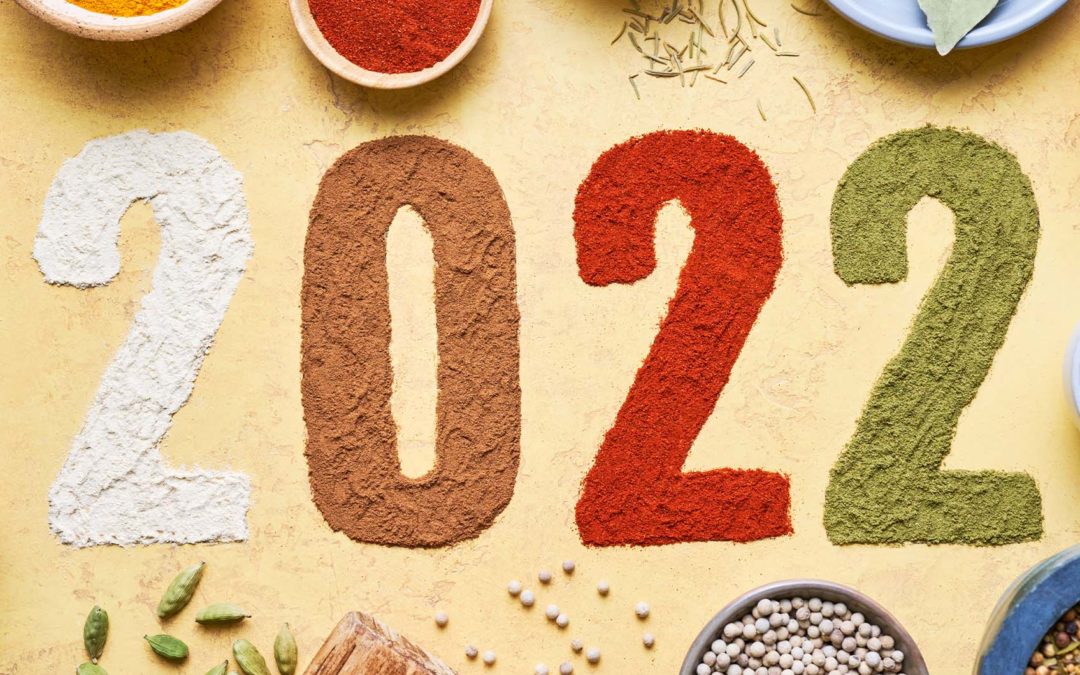Through the ever-changing landscape of 2020 and 2021, we have been reminded how important it is to plan ahead.
The supply chain underlying the food industry has changed dramatically over the past year, and assumptions for how to plan and organize around ingredient and supply shipments for 2021 need to be revisited for 2022.
In this article, we’ll explore what ingredient buyers need to know about how to forecast in the current supply chain situation, including:
- A review of supply chain changes from the last year
- What to expect in terms of shipping times and prices
- Best practices that food businesses should use to better plan for this year
We take our responsibility as a spice supplier seriously and hope this article will help you stay prepared for another challenging year ahead.
The Supply Chain in 2020-2021: Impacts We Endured
Over the last two years, the global supply chain has been on a constant rollercoaster. Global trade and labor disruption has forced us to change our expectations for how (and how fast) food moves around the country.
- 28% of us had to find workarounds for shortages and out-of-stocks
- 56% of us had to renegotiate contracts to better fit delivery timeframes
- 28% of us looked for alternative sourcing options
Warehouses sat full of stock with no one to move it. Shipping barges put out anchors with dock waiting times longer than we’ve ever seen before. When someone asked Todd Maiden what’s causing so many delays, he humorously said “pick your bottleneck”.
Food companies have needed to come up with creative solutions to keep business running smoothly.
The Supply Chain in 2022: What’s Coming Next
As we move into 2022, we expect supply chain issues to continue. This may impact you in a number of ways, including (but not limited to):
- Market prices will continue to increase: Market prices are calculated based on supply and demand. With lockdown restrictions and changes in demand, the inflation rate of the US Dollar is expected to remain above the typical 2% for the remainder of the year.
- You may experience longer shipping times: Global factors such as increase in shipping volume, shipping container shortages, and labor restrictions lead some experts to believe that global shipping delays—including for food and agricultural products—aren’t in the rear-view mirror yet.
- Spices may be unavailable: In the past, the industry norm was to order conservatively and just-in-time so you didn’t have to hold extra inventory. Under the current climate, we don’t recommend this strategy. If you don’t order ahead, you may not be able to get the spice you need when you need it.
At Pacific Spice, we’re acknowledging our current reality and have detailed contingency plans for when things are inevitably delayed or disrupted. If you’re looking for an ingredient supplier who’s not going to get caught by surprise with more delays—reach out today.
Food Industry Best Practices to Smooth Over Supply Chain Woes
In light of these challenges, there are a handful of practices that we strongly recommend food companies adopt in order to mitigate supply chain risk and business disruption.
Plan Further Ahead
The theme for 2022 is plan ahead. Planning ahead will help ensure you’ll get the products you need in a timely manner.
Talk to your sales rep about your needs, they will help you ensure you are ordering with plenty of lead time (we’re talking months, not weeks).
Order from a Reliable Supplier
Order from a supplier you can trust with a good track record. Here are a handful of signals to look for from a reliable and trustworthy partner:
- Quick, clear communication when you have questions or concerns
- Planning ahead and contingency plans for when global shipments are delayed
- Processing ingredients in-house (fewer middle-men, less risk of delays)
- High commitment to food safety and quality
Plan for Menu Substitutions
In the case of shortages or delays in shipping, it’s important to maintain flexibility and have a backup plan in place. Ask your spice supplier which of your spices are at highest risk and come up with a few dishes you can easily add to the menu at a moment’s notice if shortages arise.
Here are a few ways you can get savvy about substitutions before you’re out of time.
- Let PSC Help You Flavor Match: Our team of flavor experts at Pacific Spice are skilled at matching flavor profiles. If an ingredient is unattainable, we will be able to offer you a substitute that’s comparable in flavor and cost.
- Substitute Similar Spices: Many spices have similar flavor profiles to one another and can be substituted with very little impact to flavor. For example, cumin, coriander, and caraway seeds all taste very similar. Plan for contingency recipe alterations.
- Try the Same Spice, Different Origin: We often source the same spice from various regions. This means that if there are shipping delays from one country, we may be able to replace your usual order with the same spice from a different country of origin.
Let’s Outsmart 2022’s Supply Challenges Together
We’re not out of the woods yet—expect evolving and new challenges to arise (and just as importantly, work with a partner who’s on the same page!).
We’re here to help at Pacific Spice! We stay lock-step with the latest shipping and supply chain news so you don’t have to. Your success is our success, and we will do everything in our power to help you plan ahead and prepare.
Want to work together? Contact us today!

